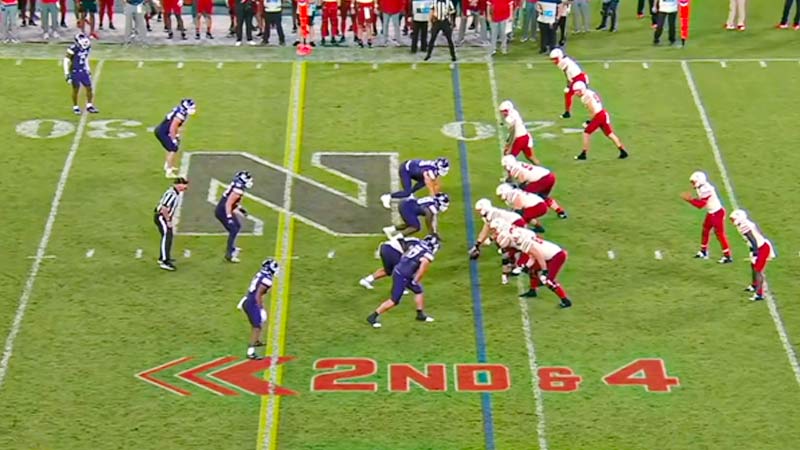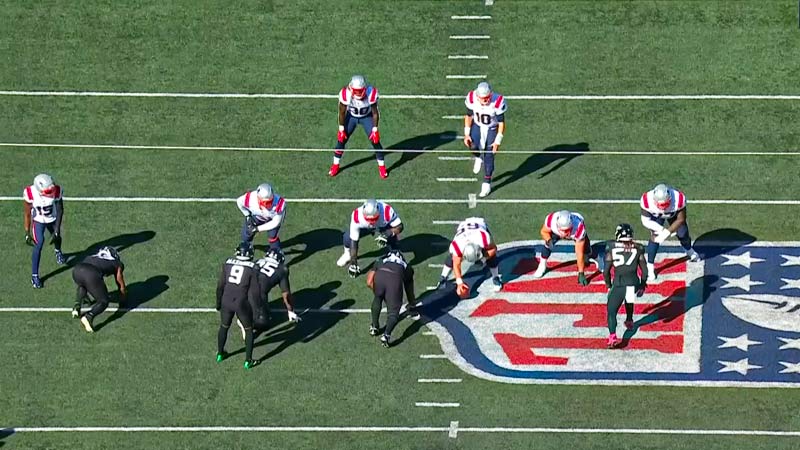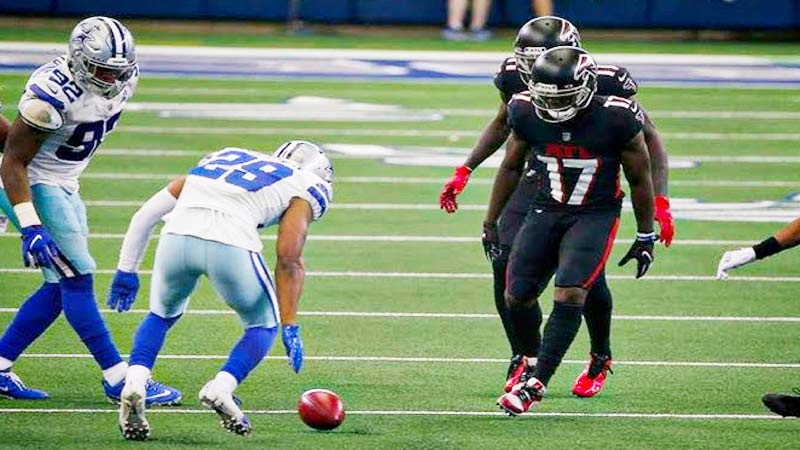American football is a captivating and action-packed sport that has captured the hearts of millions around the world. While its complexity might seem overwhelming at first glance, the fundamental rules that govern the game are quite straightforward.
In this guide, we’ll break down the essential rules of American football to help newcomers grasp the game’s mechanics and enjoy the excitement it offers.
Whether you’re a curious observer or a budding fan, read on to find answers to five frequently asked questions about the basic rules of American football.
Basic Rules of the Game
The basic rules of American Football for the match include the followings:
Teams and Positions
American football is played between two teams, each consisting of 11 players on the field at a time. One team is on offense, aiming to score points, while the other is on defense, trying to prevent the opposing team from scoring.
In total, a football team typically comprises around 45 players, with various positions specialized for offense, defense, and special teams.
Quarters and Time
The game is divided into four quarters, each lasting 15 minutes. The clock stops frequently due to incomplete passes, players going out of bounds, and other situations.
This means that a typical game can last longer than its designated playtime. There is a halftime break of 12 minutes between the second and third quarters.
Time-Outs
Each team is allowed a certain number of time-outs in each half of the game. Time-outs are short breaks during which the team can regroup, strategize, and make substitutions.
Usually, each team has three time-outs per half, allowing them to stop the clock temporarily and discuss tactics.
Objective – Scoring
The primary goal of American football is to score points. Teams can do this by advancing the ball into the opponent’s end zone.
This can be achieved either by running the ball with a player carrying it until tackled or by passing the ball to a teammate who is closer to the end zone.
End Zone
The end zone is the rectangular area at each end of the field, delimited by goal lines and end lines. Scoring a touchdown happens when a player carrying the ball crosses the opponent’s goal line and enters their end zone. This is the primary way to score points and is worth six points.
Conversion/Try
After a touchdown is scored, the team has an opportunity to earn additional points by attempting a conversion.
The team can choose to kick the ball through the uprights (worth one point) or attempt to carry the ball into the end zone again from a short distance (worth two points).
Field Goals
During regular play, if a team is within kicking range of the opponent’s goalposts, they can attempt a field goal. This involves kicking the ball through the uprights, located at the back of the end zone. A successful field goal is worth three points.
Quarterback
The quarterback is a pivotal player on the offense. They are responsible for leading the team, calling plays, and distributing the ball.
The quarterback can either pass the ball to receivers downfield or hand it off to running backs. They are crucial in dictating the flow of the game and making split-second decisions.
Down Rules in American Football

Here, is the explanation of the down rules in American football.
1st Down
This is the starting point for the offense. The offensive team has four chances (or downs) to advance the ball at least 10 yards down the field.
They need to move the ball beyond the yard marker that indicates the 10-yard distance from where they began. If they achieve this, they are awarded a new set of four downs to continue their progress.
2nd Down
If the offensive team fails to advance the ball 10 yards on the 1st down, it becomes the 2nd down. They still have three more downs left to try to reach the required distance.
The yard marker now reflects the new line of scrimmage based on where the ball was when the 1st down attempt was made.
3rd Down
If the offensive team again fails to move the ball 10 yards on the 2nd down, it becomes the 3rd down. They now have two more downs remaining to gain the necessary yardage.
The yard marker adjusts once more based on where the ball was at the end of the 2nd downplay.
4th Down
If the offensive team still hasn’t covered 10 yards on the 3rd down, it becomes 4th down. This is the final chance for the offense to gain the required yardage.
At this point, they must make a decision: either attempt to continue their drive by going for the first down or choose to punt (kick) the ball to the opposing team.
Punting is often the choice when the team is far from the opponent’s end zone because it forces the opponent to start their drive from a less favorable position.
Alternatively, the offensive team might attempt a field goal if they are close enough to the opponent’s end zone, as this can earn them points.
Change of Possession
If the offensive team fails to gain 10 yards within four downs, the ball is turned over to the opposing team at the spot where the last down ended. This is known as a “turnover on downs.”
The opposing team now takes over on offense and begins their drive from the spot where the ball was placed.
Downs are a crucial aspect of American football, determining how far the offensive team must advance the ball to maintain possession. They have four downs to cover 10 yards, and if they succeed, they earn another set of four downs. If they don’t, possession is given to the other team.
The choice between going for it on 4th down, punting, or attempting a field goal is strategic and depends on the game situation.
Rules of Scoring in American Football

Scoring in American football is achieved through a variety of plays and situations. Here are the main ways teams can score points in the game:
Touchdown (6 points)
A touchdown is the primary way to score in American football. It occurs when an offensive player carries the ball across the opponent’s goal line or catches a pass in the end zone. The team that scores a touchdown is awarded 6 points.
Extra Point (PAT – Point After Touchdown)
After a touchdown is scored, the scoring team has the opportunity to kick an extra point or attempt a two-point conversion to add additional points.
- Extra Point (1 point): The team can kick the ball through the opponent’s goalposts from a short distance after a touchdown, earning 1 point.
- Two-Point Conversion (2 points): Instead of kicking, the team can attempt to advance the ball into the end zone again from a short distance. If successful, they earn 2 points.
Field Goal (3 points)
A field goal is scored when a team kicks the ball through the opponent’s goalposts from anywhere on the field.
This is often attempted on fourth down if the team is close enough to the opponent’s end zone to make the kick. A successful field goal earns the team 3 points.
Safety (2 points)
A safety is scored by the defense when they tackle an offensive player with the ball in the offensive team’s own end zone.
It can also occur if the offensive team commits certain penalties while in their own end zone. A safety awards the defense 2 points and possession of the ball.
Touchback
While not directly a scoring play, a touchback can result in an advantageous field position for the receiving team. If a kickoff or punt is caught by the receiving team in their own end zone and is not advanced out of the end zone, or if the ball goes out of bounds in the end zone, it’s considered a touchback.
The receiving team gets the ball at their own 25-yard line in professional football, avoiding the risk of a return and potentially starting in a better position.
These scoring plays contribute to the overall dynamics and strategy of American football. Teams must carefully consider their options during different situations in the game to maximize their scoring potential and overall performance.
The combination of touchdowns, extra points, field goals, and safeties allows for a wide range of possible scores and exciting gameplay.
Timing Rules in American Football

Timing rules in American football are essential for controlling the flow of the game and ensuring fairness between teams. The game is divided into four quarters, and each quarter has its own timing rules.
Here’s an overview of the timing rules in American football:
Quarters and Halftime
- The game is divided into four quarters, each lasting 15 minutes of professional football.
- After the first and third quarters, there is a break of a few minutes.
- Halftime occurs after the second quarter and typically lasts around 12 to 15 minutes.
Play Clock
- The play clock is used to keep track of the time between plays. It starts at 40 seconds (in the NFL) after the end of a play or when the ball is spotted by officials.
- The offensive team must snap the ball before the play clock runs out. If they fail to do so, they are penalized for the delay of the game.
Two-Minute Warning
- In the NFL, there is a two-minute warning in each half. This occurs when there are two minutes left on the game clock in the second and fourth quarters.
- During the two-minute warning, the clock stops, and it provides teams with an opportunity to strategize and make adjustments.
Stopping the Clock
- The clock stops in various situations, including incomplete passes, when a player goes out of bounds, and when a team calls a timeout.
- Each team is allowed three timeouts per half. A timeout allows the team to stop the clock and regroup.
- If a team doesn’t use all their timeouts in a half, they don’t carry over to the next half.
Clock Restarting
- The clock restarts after an incomplete pass or a player going out of bounds once the ball is spotted by the officials.
- It also restarts after certain penalties, like false starts, delay of the game, and others.
- The clock restarts when the ball is snapped after a play.
End of Game
- In the final two minutes of the second and fourth quarters, the clock stops on every play that ends with the ball carrier going out of bounds or an incomplete pass.
- If the clock runs out while a play is in progress (except for defensive penalties), the quarter ends once the play concludes.
Overtime
- In the case of a tie at the end of regulation, overtime periods are played to determine the winner.
- In the NFL, each team gets a possession, unless the first possession results in a touchdown. If the game is still tied after both teams have had possession, the next score wins.
- Overtime periods continue until a winner is determined.
These timing rules contribute to the strategic decisions made by teams and coaches throughout the game, making American football a dynamic and exciting sport to watch.
FAQs
What are downs and how do they work in American football?
Downs are a core concept in American football. Each team has four downs, or attempts, to advance the ball by at least 10 yards toward the opponent’s end zone.
If they succeed, they earn a new set of downs. If not, possession of the ball changes and the opposing team takes over on offense.
How is scoring achieved in American football?
Scoring in American football happens through various plays. The primary way is a touchdown, where the offensive team carries the ball into the opponent’s end zone or catches a pass there, earning 6 points.
After a touchdown, teams can kick an extra point (1 point) or attempt a two-point conversion (2 points). Field goals, worth 3 points, are achieved by kicking the ball through the opponent’s goalposts.
Safeties, worth 2 points, occur when the defense tackles an offensive player in their own end zone.
What is the role of the play clock in the game?
The play clock is a crucial timing element. It starts at 40 seconds after the end of a play, and the offensive team must snap the ball before the play clock runs out. This rule keeps the game moving and prevents the delay of game penalties.
Can you explain the concept of quarters and timing rules?
An American football game is divided into four quarters, each lasting 15 minutes. There’s a halftime break after the second quarter.
The clock stops in various situations, such as incomplete passes, players going out of bounds, and timeouts. In the final two minutes of each half, the clock stops on more occasions to allow for strategic decisions.
How does overtime work in American football?
Overtime is used to break ties in some games. Each team gets a possession, with the exception of a touchdown on the first possession, in which case the game ends. If the score remains tied after both teams have had possession, the next score wins the game.
Wrapping Up
American football’s basic rules are the foundation of the sport’s thrilling gameplay and strategic decisions.
Understanding downs, scoring mechanisms, timing rules, and other fundamental concepts will not only enhance your enjoyment as a viewer but also provide you with a deeper appreciation for the intricacies of this beloved sport.
So, grab your favorite team’s jersey, settle into your seat, and get ready to experience the excitement of American football like never before! Thank you for your time.







